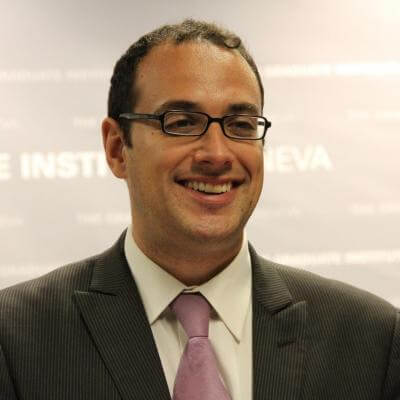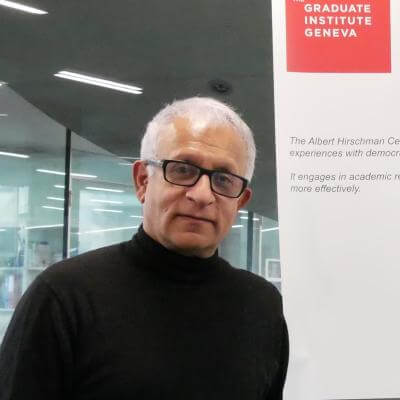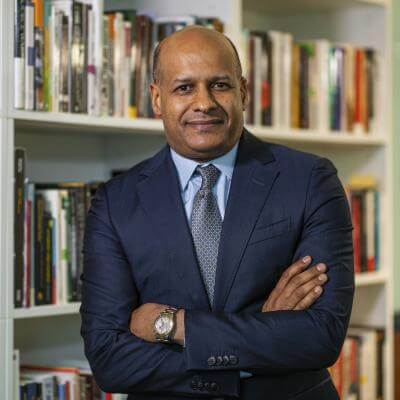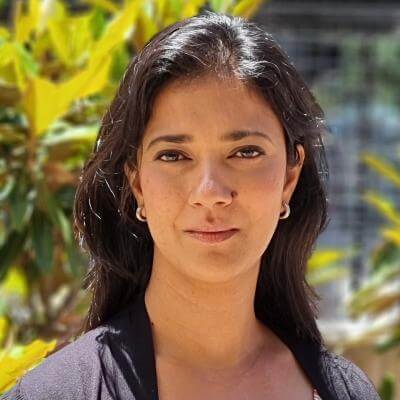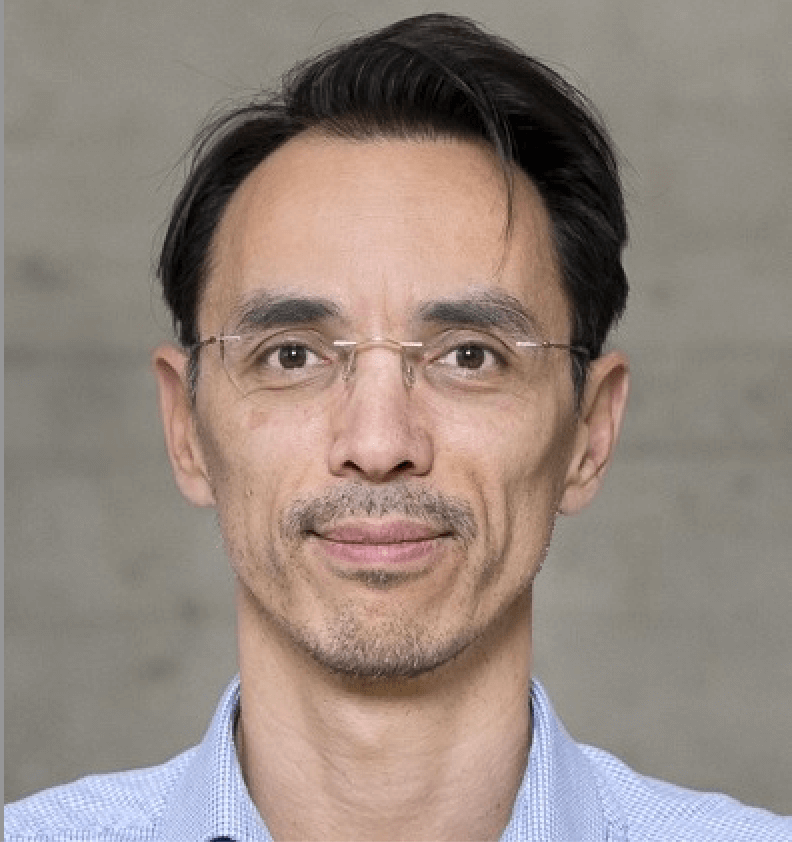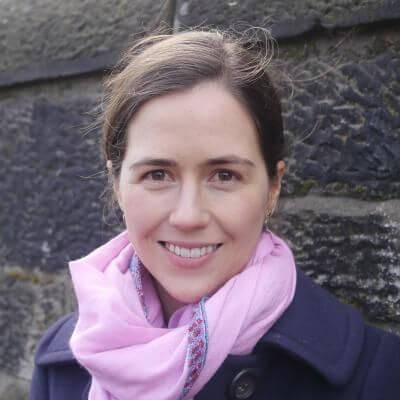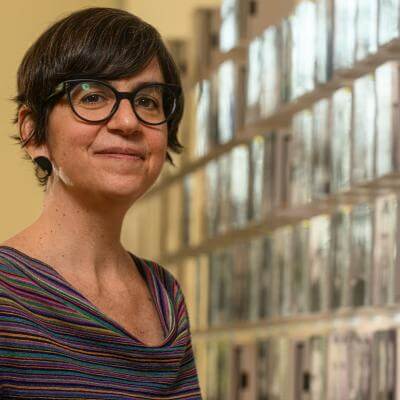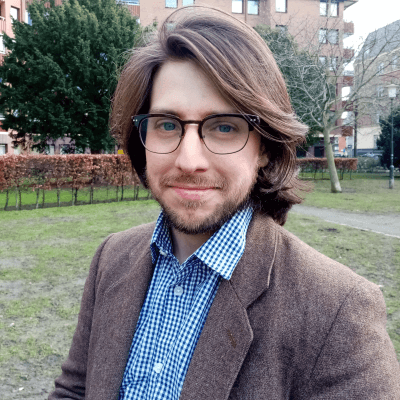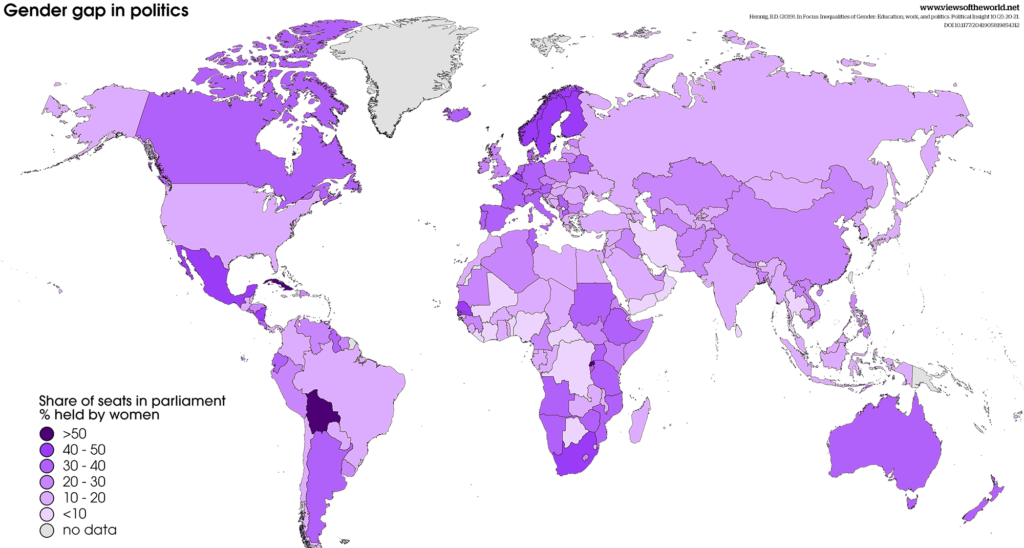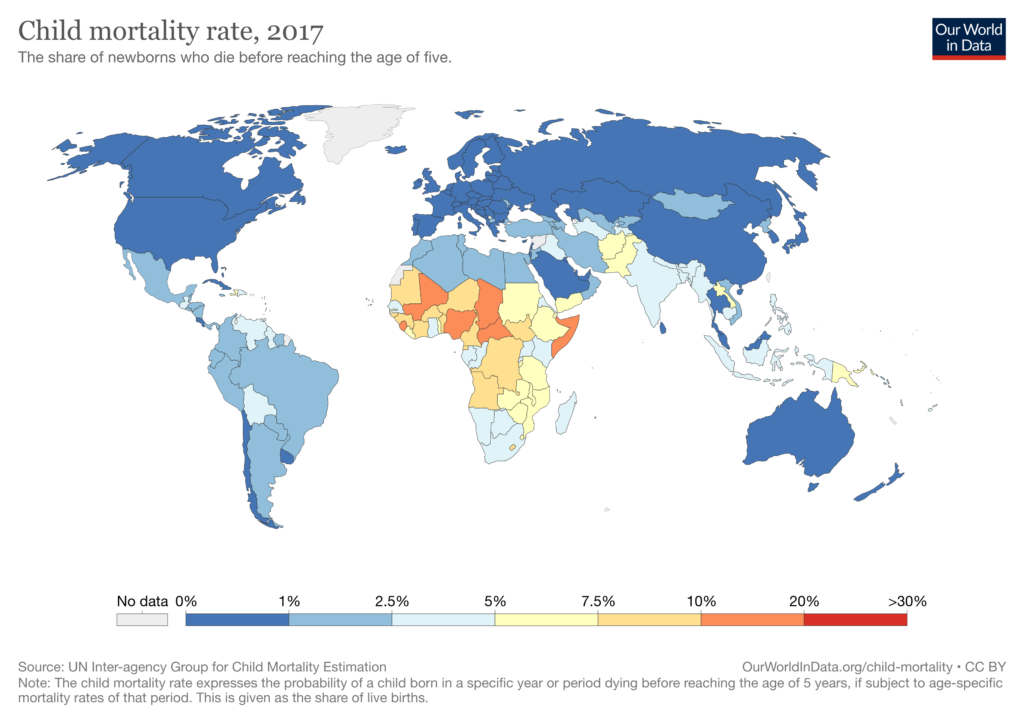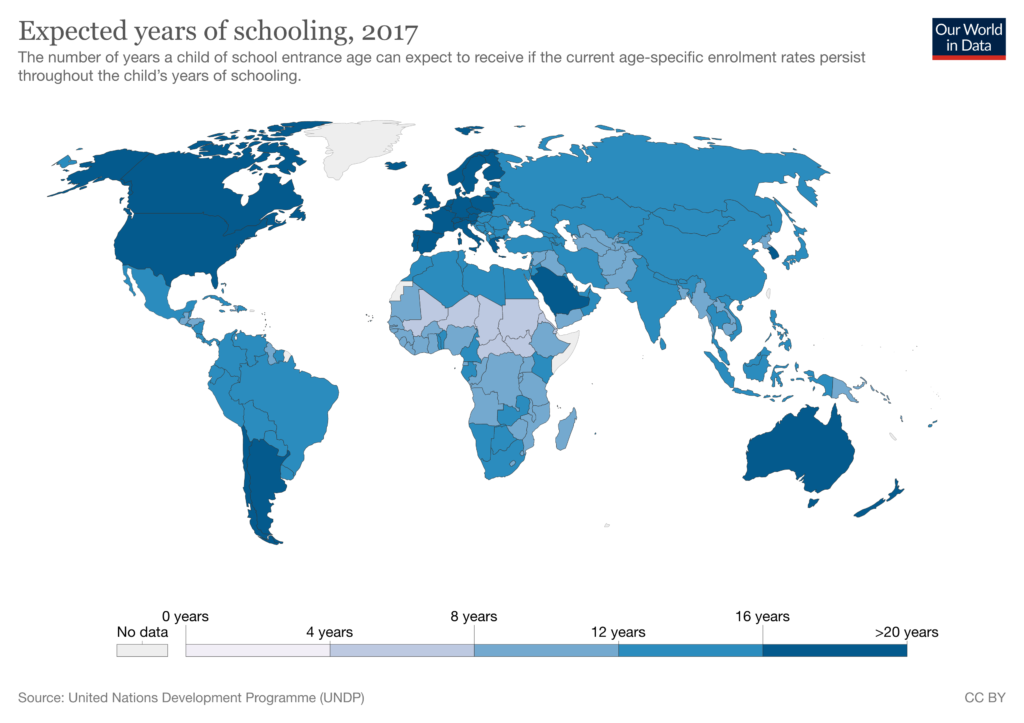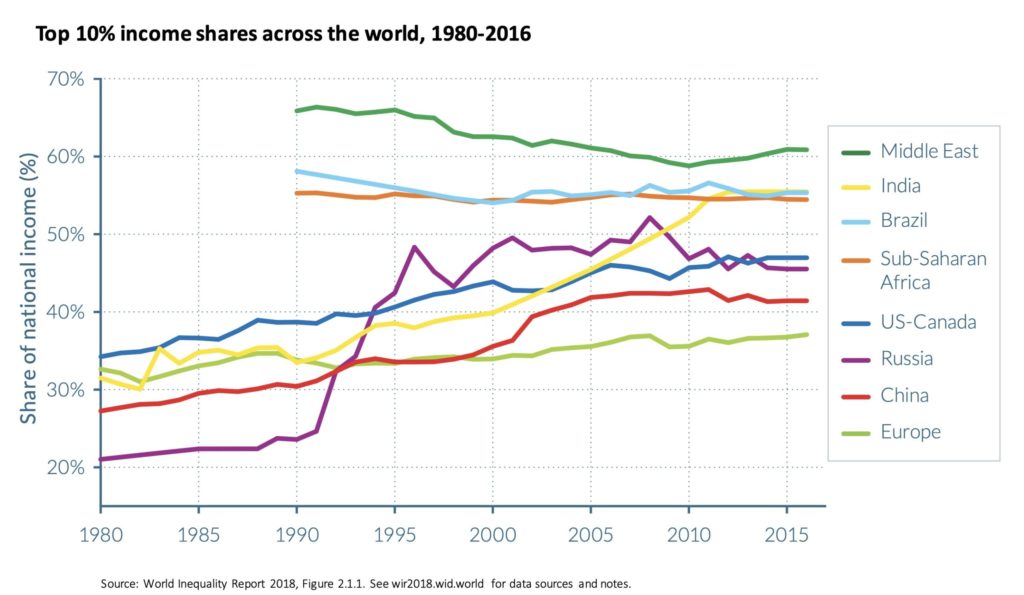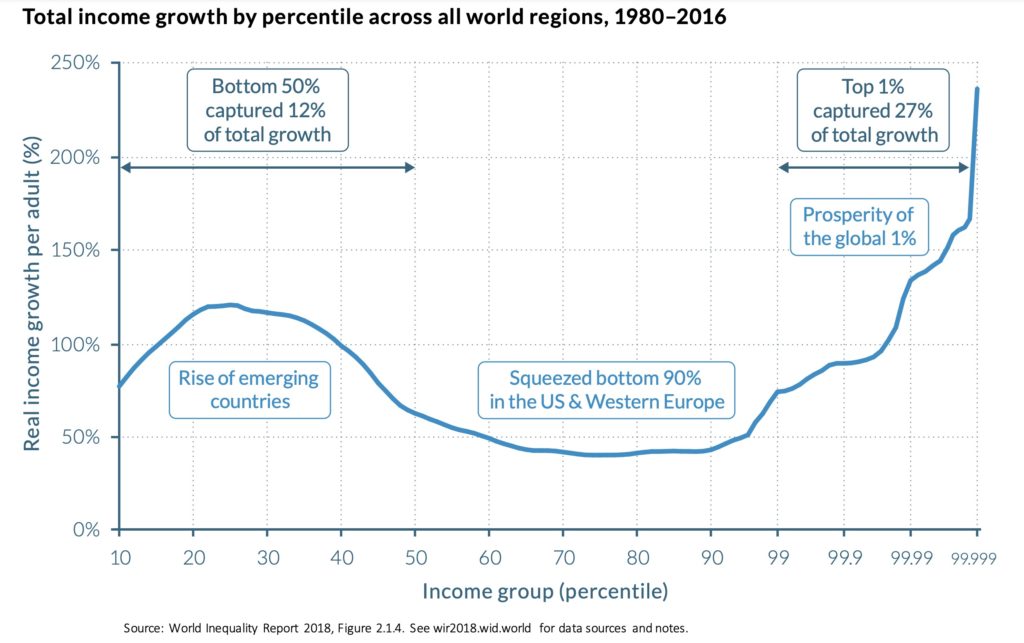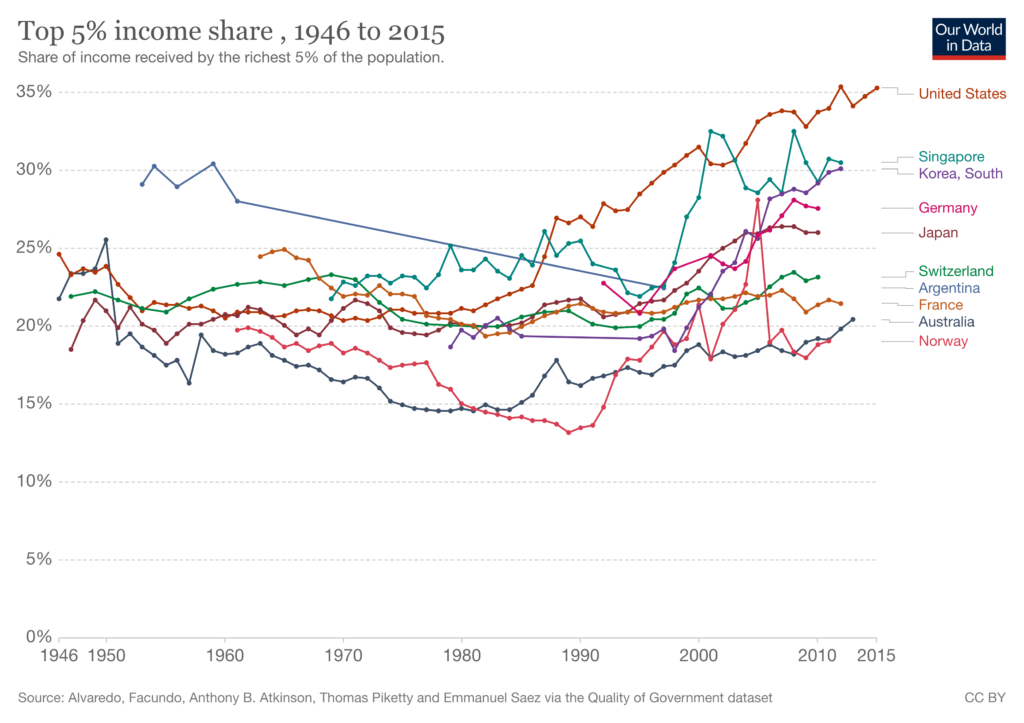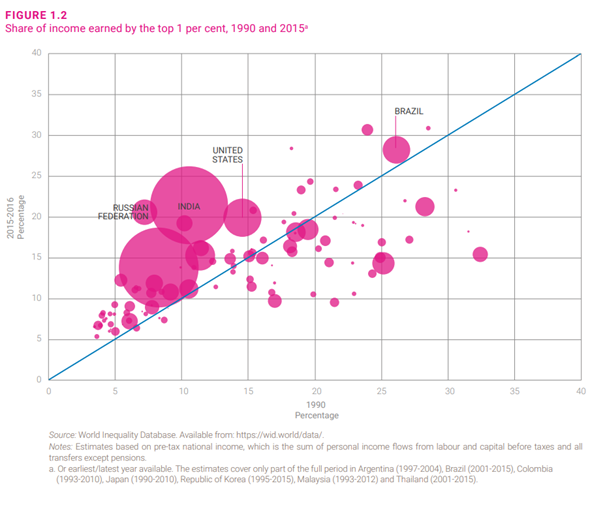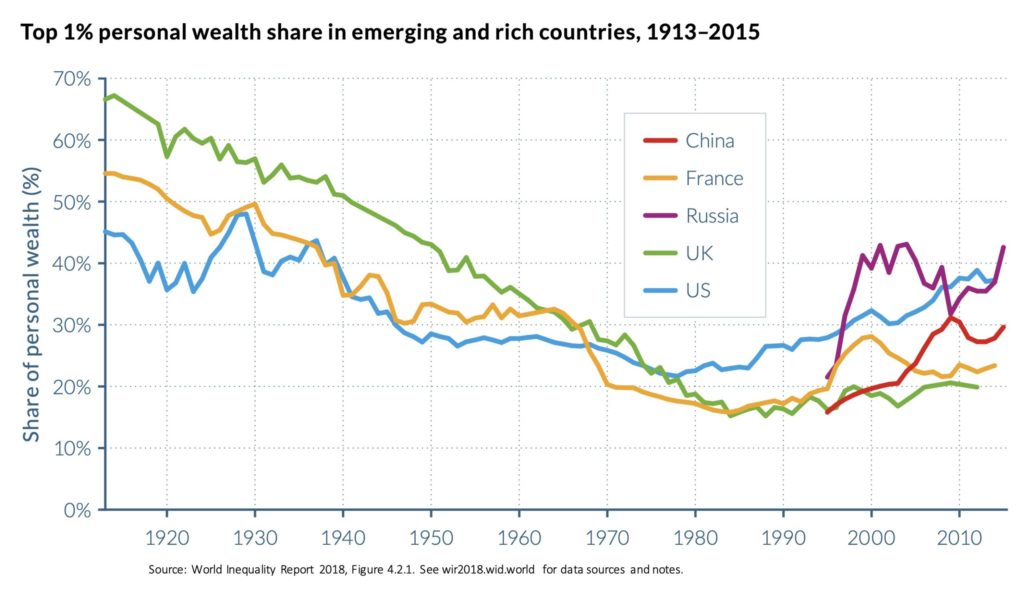The Rise of Inequality and Its Contested Meanings
The disposition to admire, and almost to worship, the rich and the powerful, and to despise, or, at least, to neglect persons of poor and mean condition is the great and most universal cause of the corruption of our moral sentiments.
Adam SMITH, Scottish Political Economist (1723–1790)
Inequality is complex and multifaceted. It depends on a series of global processes, technological innovations, economic growth and political choices. Inequality is eminently cross-sectional as it spans issues of class, gender, age, ethnicity, sexual orientation, and religion. Like a thousand-headed hydra, inequality finds expression in inequitable access to health, food, air, water, education and security but frequently takes on more subtle, sublimated forms of discrimination hiding in plain sight such as mental prejudice or administrative antipathy.
Inequality is relative, contingent on its terms of comparison, and subjective. It depends on culturally and psychologically mediated perceptions and discourses. Narratives about “imagined meritocracies” or attitudes towards the importance and nature of work, for instance, impact social expectations as to who deserves to be rich or not.
Inequality, finally, is noxious. It results in stifled economic growth, political tensions and worsening social indicators, including rising infant mortality, obesity, crime rates, drug abuse, and lower life expectancy. Inequality directly threatens democracy, as it erodes the middle classes, increases social polarisation and fuels political mistrust, constituting a favourable breeding ground for illiberal or populist movements.
The Persistent Nature of Inequality
Historically, inequality has been the norm. While tribal systems knew relatively flat, isomorphic societal structures, civilisation brought forth more hierarchical societies based on administrative apparatuses and complex divisions of labour. The Enlightenment revolutionised humanity’s approach to inequality through its all-out attack on social prejudice and privilege and bold claim that all human beings are equal. The French Revolution heralded equal political rights for all and the massive surpluses generated by the Industrial Revolution enabled more ambitious schemes of social redistribution. This trend culminated in an exceptional decline in inequality in the second half of the twentieth century, mostly in the West, through progressive fiscality and ambitious social programmes. After the oil shocks in the late 1970s and the ensuing neoliberal pushback, however, the collective utopia of the welfare state faltered and inequality started to rise again.
As Thomas Piketty and others have argued, and contrary to the predictions of classic equilibrium models, the natural tendency for inequality in capitalist societies — if remained unchecked — is to rise, with income and wealth concentrating in the upper percentiles of the population. As Marx had anticipated, in the long run capital yields by far exceed general economic growth and labour compensation.
While inequality between countries has declined due to incomes rising faster in developing countries – with North Americans, however, still earning 16 times more on average than sub-Saharan Africans[1] – the income gap within countries has now reached levels last seen in the early twentieth century. Developed countries such as the United States, Britain, Australia, Canada, large parts of Europe, China and Japan have been most affected. The richest 10% in OECD countries now earn 10 times more than the poorest 10%.[2] Looking at wealth inequality, the situation is even more dramatic. In 2018, the 26 richest people in the world held as much wealth as the poorer half of the global population (3.8 billion people)[3] and seven of the world’s richest people saw their fortunes increase by over 50% in the wake of the COVID crisis[4]. As a consequence, a new class of globally connected superrich has emerged, deriving their wealth not just from land, property and government bonds, as previously, but also from prodigious executive salaries and “super-bonuses”.
The Drivers of Inequality
The causes driving inequality are multiple. Aside from structural megatrends such as globalisation, climate change and urbanisation, a key factor is the growing financialisation of the economy. We are indeed witnessing a “return of capital”[5] as the rich benefit from the sheer scale of their investments as well as privileged access to information, expertise and investment opportunities. Assisted by an “income defence industry”,[6] the rich have proven remarkably resourceful in concealing their assets in overseas tax havens (an estimated 8% of global wealth in 2013).[7] Money begetting money, inequalities of income are a function of prior inequalities of wealth, as the rich benefit from privileged access to elite education and exclusive networks. Finally, the superrich have grown less inclined to make social and fiscal concessions, feeling less beholden to national frameworks and less immediately threatened by socialist upheavals than during the Cold War.[8]
Inequality has also risen because of the fall from grace of the welfare state and, more broadly, of social democracy. Trade unions have seen their clout continuously diminishing, ultimately proving powerless to prevent the systematic atomisation of the workforce into endlessly malleable (or “agile”) and interchangeable units. Over the past decades, workers writ large have seen their rights unremittingly eroding, their real wages falling and their status mercilessly fragilised by the neoliberal grinding machine. In 2013, about a third of total OECD employment was in “non-standard” jobs characterised by unpredictability and precariousness, a trend that the ongoing digital revolution is unlikely to reverse any time soon.[9]
From Equality to Identity
Three discourses have intersected and confronted each other over the issue of inequality, as on top of the worsening social divide additional fault lines have opened or hardened along logics of race, gender, ethnicity and religion: the first defends equality, the second equity and the third identity.on top of the worsening social divide additional fault lines have opened or hardened along logics of race, gender, ethnicity and religion
The modern discourse of equality has its roots in the Enlightenment’s struggle to end the discriminations and privileges of the Ancien Régime, when inequality still was the natural order of things. It found expression both in a liberal branch defending equality before the law and individual freedom and in a socialist branch defending socio-economic policies of redistribution and social mobility. Its basic tenet is to equalise economic differences while maximising private freedom. The movement in favour of equality culminated in the twentieth century but, currently, it has little wind in its sails.
The proponents of the equity paradigm form an offshoot of the equality paradigm but deplore its blindness towards religion, gender and ethnicity and its failure to live up to its promises. Women, indeed, typically still bear the brunt of poverty, violence and inequality, and racial and sexual minorities continue to face systemic discrimination. Accordingly, the proponents of the equity paradigm claim that for equality to materialise women and minorities first need to gain equal access to opportunity through positive discrimination and other support mechanisms.

The proponents of the identity paradigm, finally, argue that the equality (and/or equity) discourse is fallacious, vain and hypocritical at best, noxious at worst, as it is, precisely, the biased impetus towards equality itself that continues to sustain and worsen prejudice and discrimination. Accordingly, they have given up on the idea of equality altogether, dismissing it as an imperialistic, universal construct devised by white (male) elites to buttress their domination over society. From such a perspective, the priority is no longer to fight for equal access to rights, equal opportunities or more just social distribution but to defend specific groups and their own sets of exclusive interests and rights – often with an ambition to repair historical griefs and wrongs.
Future Prospects of Inequality
The risk for the identitarians is to ontologise difference through the development of a myriad of micro-imperialisms and hypertrophied micro-identities breeding and perpetuating new logics of fragmentation, exclusion, polarisation, righteousness and vengeance. Politically, this could play into the hands of an inherently conservative rationale essentialising inequality as pre-ordained and postulating it as the new (old) normal, or what used to be called the Great Chain of Being. In the sheer limbo of endless postmodern differentiation, indeed, individual identity (or subjectivity) will presumably not be worth much. New strongmen are likely to take over and devise collective projects of their own, conjuring up the old (xenophobic) demons of ascriptive identity.
Inequality, however, is not inevitable as it depends on political choices. Inequality, however, is not inevitable as it depends on political choices. In the context of a looming recession in the wake of the COVID crisis, turning a blind eye to inequality would prove disastrous. A wealth of measures has been suggested as to how inequality could be kept in check, including a global wealth tax and wealth registry, more progressive tax regimes and better tax compliance, stronger protection of workers’ rights and safety nets (or basic universal income), the bridling of oligopolistic or monopolistic powers, the upending of the narrative of “deregulation”, tighter controls on the financing of political parties, better integration of immigrants in political decision making and more inclusive education systems.
More generally, what is needed is a renewed impetus for more consensual and inclusive social change to avoid the fragmentation and polarisation that will likely play into the hands of illiberals and other advocates of bio and power politics. Instead of the current dialogue of the deaf, a more productive exchange between proponents of equality (and equity) and those of identity is needed. This will require squaring the circle again by devising new ways of reconciling equality and diversity, redistribution and recognition. The answer may lie not in renouncing culture altogether – as Rousseau inferred in his Second Discourse – nor in ontologising difference as professed by identitarians (and racists), nor in its erasure as suggested by universalists (which ultimately proves utopian and counterproductive), but rather in fostering its fruitful interplay, dialogue and exchange.
[1] UN, “Inequality – Bridging the Divide”.
[2] Brian Keeley, Income Inequality: The Gap between Rich and Poor, OECD Insights (Paris: OECD Publishing, 2015).
[3] UN, “Inequality – Bridging the Divide”.
[4] Hiatt Woods, “How Billionaires Saw Their Net Worth Increase by Half a Trillion Dollars during the Pandemic”, BusinessInsider, 30 October 2020.
[5] Mike Savage, “An Interview with Thomas Piketty, Paris 8th July 2015” (Working Paper 1, International Inequalities Institute, LSE, 2015).
[6] Jeffrey A. Winters, “Civil Oligarchies”, chap. 5 in Oligarchy (Cambridge: Cambridge University Press, 2011), 208–74.
[7] Gabriel Zucman, “The Missing wealth of Nations: Are Europe and the U.S. Net Debtors or Net Creditors?”, Quarterly Journal of Economics 128, no. 3 (2013) 1321–64.
[8] Matias López and Joshua K. Dubrow, 2020, “Politics and Inequality in Comparative Perspective: A Research Agenda”, American Behavioral Scientist 64, no. 9 (2020): 1199–210.
[9] Brian Keeley, Income Inequality.
-
1
 Visible and Invisible Inequalities
Visible and Invisible InequalitiesOver the last five decades, the objective of reducing poverty has overtaken that of reducing inequalities in the countries of the South. Three decades of neoliberal politics have also made us more indifferent, including to some forms of inequality that may be life-threatening, warns Gopalan Balachandran.
-
2
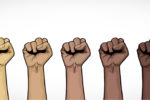 The Enduring Inequities of Racism
The Enduring Inequities of RacismCeaselessly breeding asymmetry throughout generations, racism dwells in the intangibles of existence and experience, intimate spaces of inequality whose violence is as acute as the one playing out at the more visible, less private surface, observes Mohammad-Mahmoud Ould Mohamedou.
-
3
 Inequality and Gender
Inequality and GenderThere have been significant gains for women over the past 25 years, for instance in access to education or reduction of maternal deaths and unintended pregnancies. However, harmful forms of gender-based violence continue to be rampant while women’s economic and political participation has by far not caught up with men’s, deplores Elisabeth Prügl.
-
4
 Education and the New Inequality Divides
Education and the New Inequality DividesNew data collection practices and processes reinforce patterns of inequality in funding and accessing education (SDG 4). To leave no one behind, Moira Faul, Patrick Montjouridès and Arushi Terway call for funding and data regimes to target equity and inclusiveness, and build decolonised and intersectional education systems.
-
5
 Income Inequality and Economic Growth: Known Unknowns
Income Inequality and Economic Growth: Known UnknownsThere is an emerging consensus that inequality is adversely related to growth. Ugo Panizza and Sarah Voitchovsky highlight that the empirical literature on the links between inequality and growth does not align with this simple narrative, especially because the channels through which inequality may affect growth remain poorly understood.
-
6
 “Hustlers versus Dynasty”: Kenya’s New Class Politics
“Hustlers versus Dynasty”: Kenya’s New Class PoliticsWhile ethnicity has been the dominant dividing line in Kenyan politics, some argue that a new language of “hustlers versus dynasty” suggests the emergence of a more class-based politics. However, as Isabel Pike reminds us, politics of grievance are never about one axis of inequality; the hustler-dynasty frame is no exception and resonates for reasons beyond class.
-
7
 Understanding the Implications of Inequality for the Elites
Understanding the Implications of Inequality for the ElitesDo higher levels of inequality systematically prove beneficial to the global elites? And how does economic inequality articulate to (the lack of) democracy? Matias López and Graziella Moraes Silva discuss how the relationship between the wealthy and inequality varies across contexts and should best be explored as an empirical question.
-
8
 How the Pandemic Deepens Health Inequities: The Case of the United States
How the Pandemic Deepens Health Inequities: The Case of the United StatesThe United States is one of several “liberal democracies” where health inequities stem from deep, structural ills on which the COVID-19 crisis sheds a harsh light. If they remain unaddressed, many people will die prematurely, warns Ryan Whitacre.
-
9
 Inequality in Hunger and Malnutrition
Inequality in Hunger and MalnutritionThe nexus between inequality and food is not merely a matter of physical availability of enough food and economic access to healthy food. As Anne Saab makes clear, It is also a broader issue implicating the global food system and particularly the role of the state in regulating what kinds of foods are produced, advertised, and made available at what price.
PODCAST: Inégalités, anthropologie et développement – Gilbert Rist
Graduate Institute, Geneva.
PODCAST: Inequalities and Humans Rights – Irene Khan
Graduate Institute, Geneva
RESEARCH DOCUMENTARY: Inequality and Conflict – Beyond Us and Them
Realised and financed by the the FNS, and strongly supported by the Gender Centre (Graduate Institute, Geneva), this research documentary film is the result of a participatory filmmaking process and presents three projects conducted in Guatemala, Nigeria, Sri Lanka and Indonesia within the Social Conflicts module of the Swiss Programme for Research on Global Issues for Development (r4d programme). It features the research context and findings of the Gender Centre’s project “The Gender Dimensions of Social Conflicts, Armed Violence and Peacebuilding”.
TV NEWS: Hustlers vs Dynasties: Experts Warn Kenyans against the Narrative
The Youtube NTV Kenya channel
Thomas Piketty and the Inequality Economists
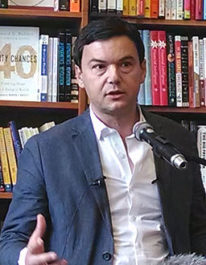 Thomas Piketty at the reading for Capital in the Twenty-First Century on 18 April 2014 at the Harvard Book Store in Cambridge, Massachusetts.
Thomas Piketty at the reading for Capital in the Twenty-First Century on 18 April 2014 at the Harvard Book Store in Cambridge, Massachusetts.Over the last decade, a vivid scholarly debate over the issue of inequality and its drivers has taken place among economists and attracted a lot of public attention. It includes, most prominently, Thomas Piketty and other French economists such François Bourguignon, Thomas Philippon, Emmanuel Saez and Gabriel Zucman but also Anglo-Saxon scholars such as Anthony Atkinson, Joseph Stieglitz and Branko Milanovic. Piketty landed an Amazon’s best-seller with his book Capital in the Twenty-First Century (2014), in which he argues that welfare states and social policies are the exception in history while the general tendency under capitalist conditions is for inequality to rise as the returns to capital are greater than the general rate of economic growth. Piketty therefore opposed previous theories, such as Simon Kuznets’ U-shape model assuming that under capitalism inequality first rises to subsequently decline with the apparition of redistributive mechanisms and policies. From Piketty’s perspective, the “egalitarian” decades from the 1930s to the 1970s, while constituting an exception, also prove that economic inequality is not predetermined but may be acted upon through political and social measures. Others such as Branko Milanovic have argued for more cyclical approaches to inequality, suggesting that it is sporadically checked by wars, plagues and demographic disruptions that are exogenous to the market.
Further readings:
- Robert H. Wade, “The Piketty Phenomenon and the Future of Inequality”, real-world economics review, no. 69 (7 Oct. 2014): 2–17.
- Mike Savage, “An Interview with Thomas Piketty, Paris 8th July 2015”, Working Paper no. 1, International Inequalities Institute, LSE, September 2015.
Measuring Inequality
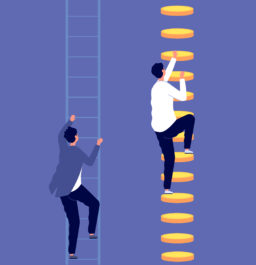
Inequality measurement can take many forms. Depending on what kind of inequality is being measured (economic, health, education, etc.), different types of indicators will be used (revenue, wealth, average years of schooling, life expectancy…). Measuring inequality further depends on the units of measurements (individuals, households, tax-paying units, etc.) and the types of entities/groups that are being compared. Measuring inequality across country or regions thus differs from measuring inequality within a given society (e.g., between specific segments of a given population) or between citizens globally.
Gini Index
The most common index to measure economic inequalities in terms of revenue or wealth is the Gini coefficient. It measures the extent to which the distribution of income across a society deviates from a perfectly equal distribution. It is based on the Lorenz curve, which represents the cumulative proportion of the population on the horizontal axis and the cumulative proportion of income on the vertical axis. If one person earned all income (maximum inequality) the Gini coefficient would be equal to 1. If income was shared equally between all, the Gini coefficient would equal 0.
Palma Index (or Ratio Measures)
Ratio measures compare how much revenue or wealth is held by a specific segment of the population as compared to another. They allow to adjust for the Gini index’s oversensitivity to changes in the middle of the distribution. The Palma ratio, for instance, measures the share of national income of the top 10% compared to that hold by the lower 40%. In more equal societies this ratio will be 1 or below but in very unequal societies it might go up to 7.
Theil Index
Theil indexes, finally, measure inequality in terms of how wealth or revenue is spread among different regions (e.g. urban and rural).
For further reading:
- UNDESA, Inequality Measurement, Development Issues no 2, 21 October 2015
- GSDRC, “Measuring Inequality”
Debate on Inequality and the Social Contract

Liberty and equality entertain an uneasy and fraught relationship. How to reconcile the two has been one of political theory’s central quandaries. Proponents of radical approaches to political equality such as Rousseau have argued that equality may only come at the prize of providing a narrow – or positive – definition of freedom. An approach that has also been applied by the French revolutionaries who, most notably during the Reign of Terror (1793–1794), applied a strict definition of what it meant to be free under republican conditions. Liberal proponents, on the other hand, have preferred a negative approach to freedom – privileging being free over being equal – by confining equality to law and reserving freedom to the private realm of individual expression. The radical impetus of equating being free to being equal may thus be opposed to the liberal impetus of equating being free to being different.
Political philosophers have further debated on whether inequality stems from history – or, as Rousseau suggests in his Second Discourse, from civilisation – and thus depends on human intervention or whether it is an inalterable anthropological constant. Liberals have argued the former, insisting that while inequality remains the norm in nature, it is mankind’s role to tame it through policies and laws (e.g., social contracts). Sociologists such as Gaetano Mosca and Robert Michels have come to the more sobering conclusion that elites are a quasi-permanent fixture of human societies and that, eventually, a minority of actors would come to dominate all political systems, even democracies. John Rawls, finally, proposed an elaborate theory of social justice arguing that the social contract needs to guarantee at once fundamental rights to individuals, equality in terms of opportunities, and that economic inequality is justified only to the extent that it serves to improve the lives of the worst off through redistributive mechanisms.
For further reading:
Jeff Manza, “Political Inequality”, in Emerging Trends in the Social and Behavioral Sciences, ed. Robert Scott and Stephen Kosslyn (John Wiley & Sons, Inc., 2015): 1–17.
